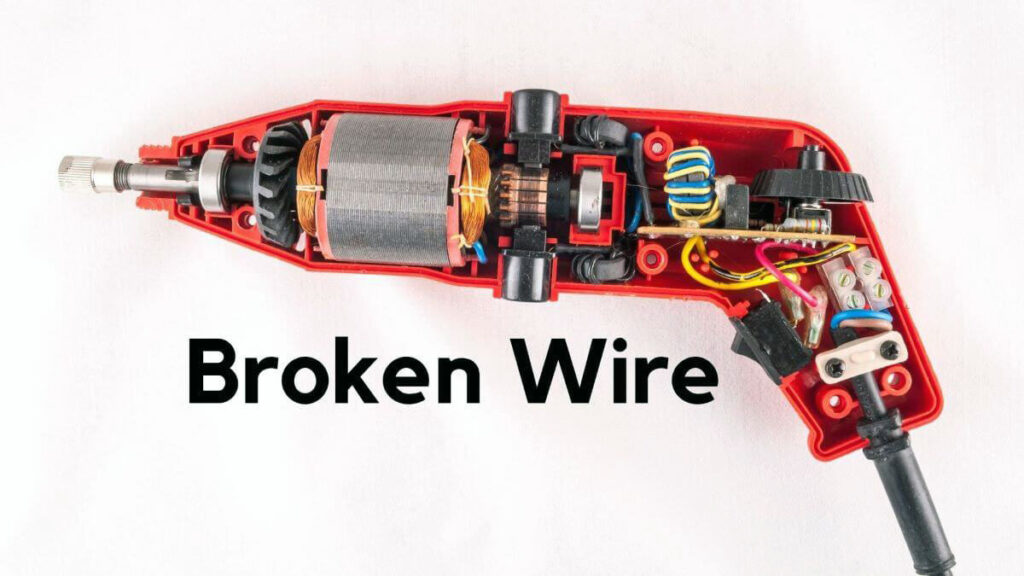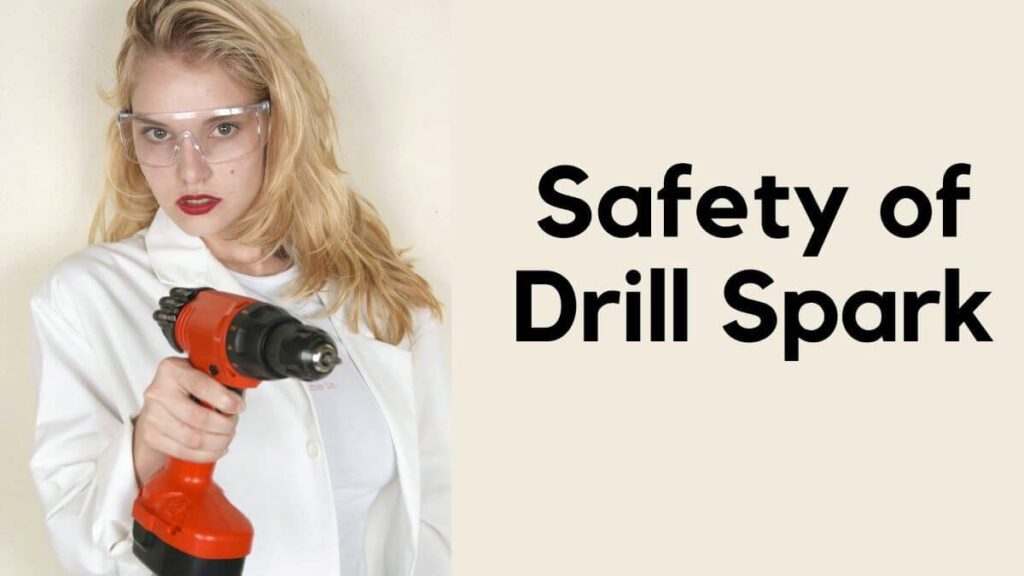A spark from a drill is the arc of electricity that leaps between the metal surface and is touching. Drill sparks are caused by the friction between two characters or when a drill bit is spinning and touches the surface. This happens when you are drilling into an electrically insulating material, such as wood or plastic.
A spark from a drill can be dangerous because it can cause an explosion if enough fuel ignites, such as oil or gas.
In this blog post, we’ll explore some of the most common reasons why this happens and what you can do to prevent it.
Table of Contents
The Science Behind Sparks Forming
Drill sparks are not just a nuisance but also a safety hazard. The science behind drills sparking is that the sparks are caused by the friction created when metal rubs against metal. This friction creates heat and pressure, which makes an electric charge.
This friction creates heat, which then causes the metal to oxidize. When this happens, some of it will turn into a gas and escape from the surface of the metal. In addition, some of the molecules in this gas will spontaneously combust due to their high temperature.
This combustion process produces light in a very localized area and can be seen as sparks.
Read More: What is SDS Drill?
What Causes a Drill to Spark?
A drill can spark when it is turned on. There are many reasons why exercises produce sparks.
There are most common seven reasons for a drill to produce sparks:
1. Dirty Drill Bit:

A dirty drill bit can cause sparks when it impacts the workpiece. To prevent this, always clean your drill bit regularly.
2. Improper Torque:
If you’re using too much torque, your drill can spark. Be sure to use the correct amount of torque for the task at hand and keep it consistent throughout the drilling process.
3. Broken Wire:

If one of your drill’s wires is broken, it can cause sparks when it hits metal objects. Check for broken wires and replace them as needed to avoid sparking.
4. Over-Tightening of the Drill Bit:
If the drill bit is too tight, it can cause sparks when drilling. The friction between the metal bit and the drill bit shaft can cause a spark. These sparks can ignite dust and gas in the drilling process, causing a fire.
5. Damaged or Faulty Cord:
If your drill is not working, the cord is likely damaged or faulty. Check if the cable is plugged in and properly plugged into the power source.
If the cord seems to be working correctly, but your drill isn’t, there might be a problem with the motor or battery. You’ll need to take your drill to a repair shop for service in either case.
6. Burnt Out Motor:
If your drill is sparking, the motor has likely burnt out. To check if this is the case, turn off the power to your drill and remove the battery.
If the motor still sparkles when you touch it, it’s likely that the engine has burnt out and needs to be replaced.
7. Faulty Electrical Connection:
If you are experiencing a spark when drilling, there is likely a faulty electrical connection. This can be caused by several factors, such as corroded or damaged wiring, loose connections, or dirty terminals.
If you cannot resolve the issue through troubleshooting, it may be necessary to replace the electrical component.
8. Brush Wear:
One of the most common reasons for sparking in a drill is worn-out carbon brushes. Carbon brushes are responsible for conducting electrical current within the drill’s motor. When they become worn or damaged, they can create erratic electrical contact, leading to sparks.
9. Friction and Debris:
Friction between moving parts of the drill or the presence of debris can also result in sparks. This is particularly true if there’s excessive friction in the chuck or the drill bit.
10. Overheating:
Excessive heat buildup within the drill’s motor can cause sparking. This can happen due to prolonged or heavy use without giving the drill enough time to cool down.
How to Prevent a Drill from Sparking
There are a few things that you can do to prevent your drill from sparking.
- First, make sure that the bit is correctly installed in the drill. If the bit is not seated correctly, it will cause sparks when drilling.
- Second, be sure to use proper safety gear when drilling. Do not wear anything that could catch on fire or cause sparks.
- Finally, please keep your hands and arms away from the drill while spinning. If you do not follow these tips, you may find yourself with a sparky drill!
What to Do if Your Drill Sparkles
If your drill sparkles, it means that something is blocking the bit from going all the way through the hole.
This can be a piece of metal, a rock, or even a piece of wood. If this is the case, you’ll need these tips:
- Make sure the drill is properly plugged in and has enough power
- Check the drill’s batteries to make sure they are fully charged
- Make sure the drill is aligned correctly and mounted securely
- Check the drill’s cutting edges to make sure they are sharp
- Check for any debris or foreign objects that may be obstructing the drill’s cutting surface
Is a Power Drill Supposed to Make Sparks?
Power drills are often used for various tasks around the home, such as drilling holes in wood or metal or using them to create screw holes. However, some people have reported that their power drills occasionally spark when turned on.
Some people think this may be because the drill’s motor is over-heating and creating sparks. Others say that it may be because of debris build-up on the drill bit, which can cause a spark when the bit is rotated.
Regardless of the reason, it is essential to keep an eye out for sparks whenever you are using your power drill and clean any debris off of the bit if it appears to be causing problems.
It is essential to keep an eye out for sparks whenever you are using your power drill and clean any debris off of the bit if it appears to be causing problems.
There are a few potential causes of sparks when using a power drill.
One common issue is that debris on the bit can cause sparks when the bit hits the metal. If this is happening, it’s essential to clean the bit off and check to see any debris on the motor or gears.
Another potential issue is that the motor may not be getting enough power. If this is the case, you may need to replace the battery or check to see any obstructions in the power supply.
How to Fix a Drill That Produces Sparks When Drilling Into
Drywall
If you are drilling into drywall, there is a good chance that sparks will fly from the drill bit. This is because drywall is made up of gypsum, which contains sulfur.
When the drill bit makes contact with the wall, it will produce sparks because of this sulfur content.
Then another most common reason is that the drill bit is not sharp enough.
Read More: Easy Way to Sharp a Drill Bit.
There are some ways to fix this problem if it arises.
- One way would be to change your drill bit to a metal one instead of a carbide one.
- Another way would be to use a different type of drywall that doesn’t contain as much sulfur in its composition, such as fiberglass or gypsum-free drywall.
Safety of drill Spark

Drills are often used in construction, manufacturing, and other industrial settings. The spark from a drill can cause an explosion and severe injury. It is essential to use a safe drill spark to avoid damage.
- The spark from a drill is very hot and can cause severe burns.
- Always use a dust mask when working with power tools.
- Keep your hands and feet well away from the drill bit.
- Always use proper safety equipment, including a dust mask, goggles, and a hearing protection device.
- It is essential to use a spark gap safety device when drilling.
- Never use a drill while impaired.
FAQs About Why Does My Drill Spark?
What do I do if my drill sparks?
If you are drilling metal, you should be wearing safety goggles, so have a plan in place to replace them if they get too scratched up.
If your drill sparks, stop drilling. Use the Allen wrench on your drill to tighten the chuck. You may need to clean out the bit with a wire brush if it has been sparking or has a lot of metal in it.
What is the best way to get rid of sparking in a drill bit?
The best way to get rid of sparking in a drill bit is by applying a lubricant. This will help reduce friction and prevent the spark from occurring.
Do Brushless drills produce sparks?
Brushless drills do not generate sparks because they are controlled by a computer rather than mechanical, carbon brushes as brushed drills are.
Conclusion
In conclusion, there are many reasons why your drill might be sputtering.
- You have not tightened the chuck properly.
- The chuck is dirty and needs to be cleaned.
- The drill bit has been used for too long, and it needs to be replaced.
- The drill bit is not sharp enough, or it has been worn out from use.
- You don’t have enough pressure on the drill when you use it, which causes it to stop working.
A drill sparking can be frustrating and can cause damage to your equipment. If your drill is sparking, there are several things you can do to fix the problem. However, by following the tips in this blog post, you can help keep your drill from sparking and ensure that your job goes smoothly.
These solutions are simple and easy and won’t take more than a few minutes.

Hey, I am Shihab Uddin, I’m a huge fan of DIY crafts. My workshop is where I spend most of my spare time, and I’m always working on some project. To that end, I’d like to share some of my knowledge and experience with you in power tools, woodworking, and other specialized materials fabrication.
I will guide you with genuine knowledge that can assist you with deciding whether a drill is appropriate according to your requirements or not. If you want to find the best drill and know which type of drill is most suited for your needs, then I can guide you with my expertise. My passion lies in helping others find the correct products they need at an affordable price.


